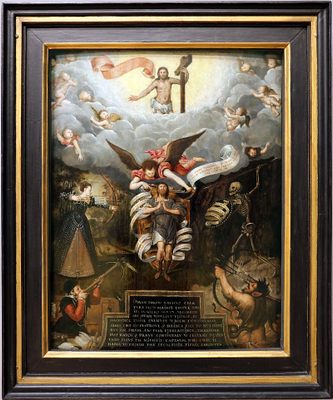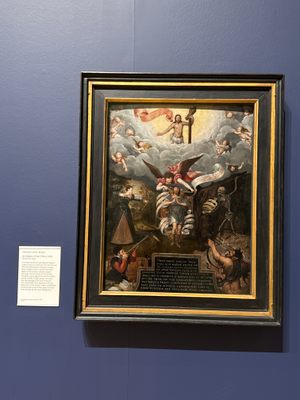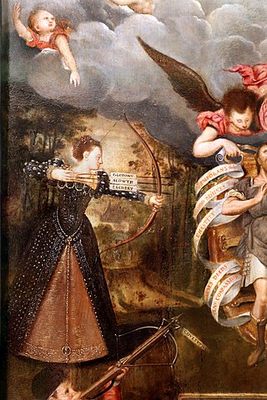About
This painting's early history is a mystery. It dates from the 16th century at the earliest, making it a rare surviving religious painting from this era in British history. But though its origins are unclear, its details and religious symbolism are easy to spot.
The motifs of this classic painting almost stretch beyond the imagination. To the left of the man's shoulder is a maiden dressed in finery and wielding a bow from which she prepares to fire three arrows toward her target. If you examine this figure more closely, focusing particularly on the arrows, you will see that each is labeled with a sin: "Glotony," "Slowth," and "Lechery."
Just below the lady, a nobleman wields a crossbow aimed towards the man's chest. Attached to the bolt/arrow of the crossbow is a label that reads "Couvetnous."
On the opposite side of the painting in the upper right corner, a leering skeleton holds a shield in one hand, while the other wields a barbed spear that appears to be also aiming at the man. Emblazoned on its shield is the phrase, "Behind thee and steal like a thief, Life to devour," which presumably represents death.
In the bottom right corner of the painting is the figure of a horned, bat-winged, serpent-tailed devil who aims three arrows at the man. His arrows are embossed with the words: "Pryde," "Envye," and "Wrath."
Related Tags
Know Before You Go
The painting is in the Tate Britain.
Community Contributors
Added By
Published
March 20, 2019


































